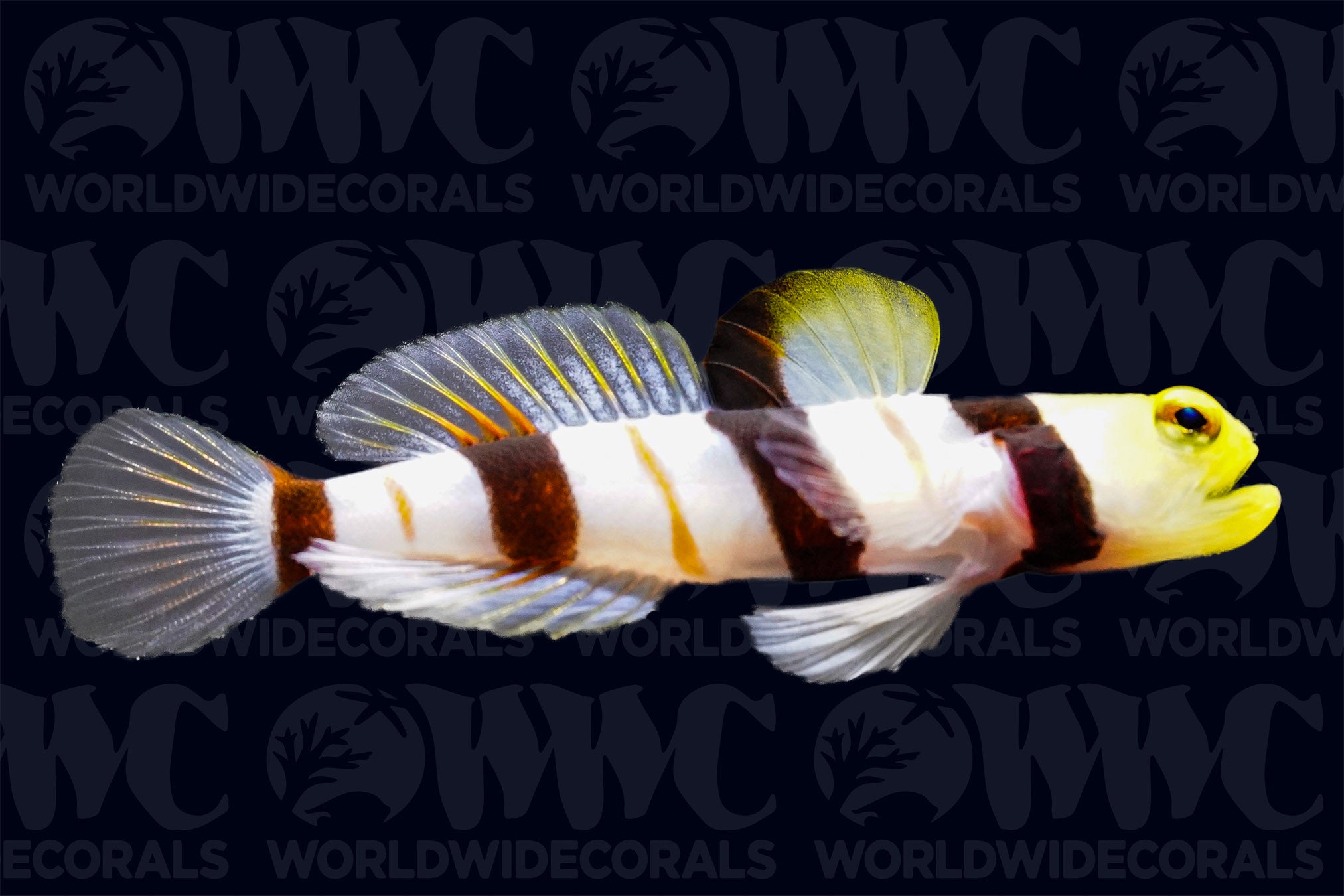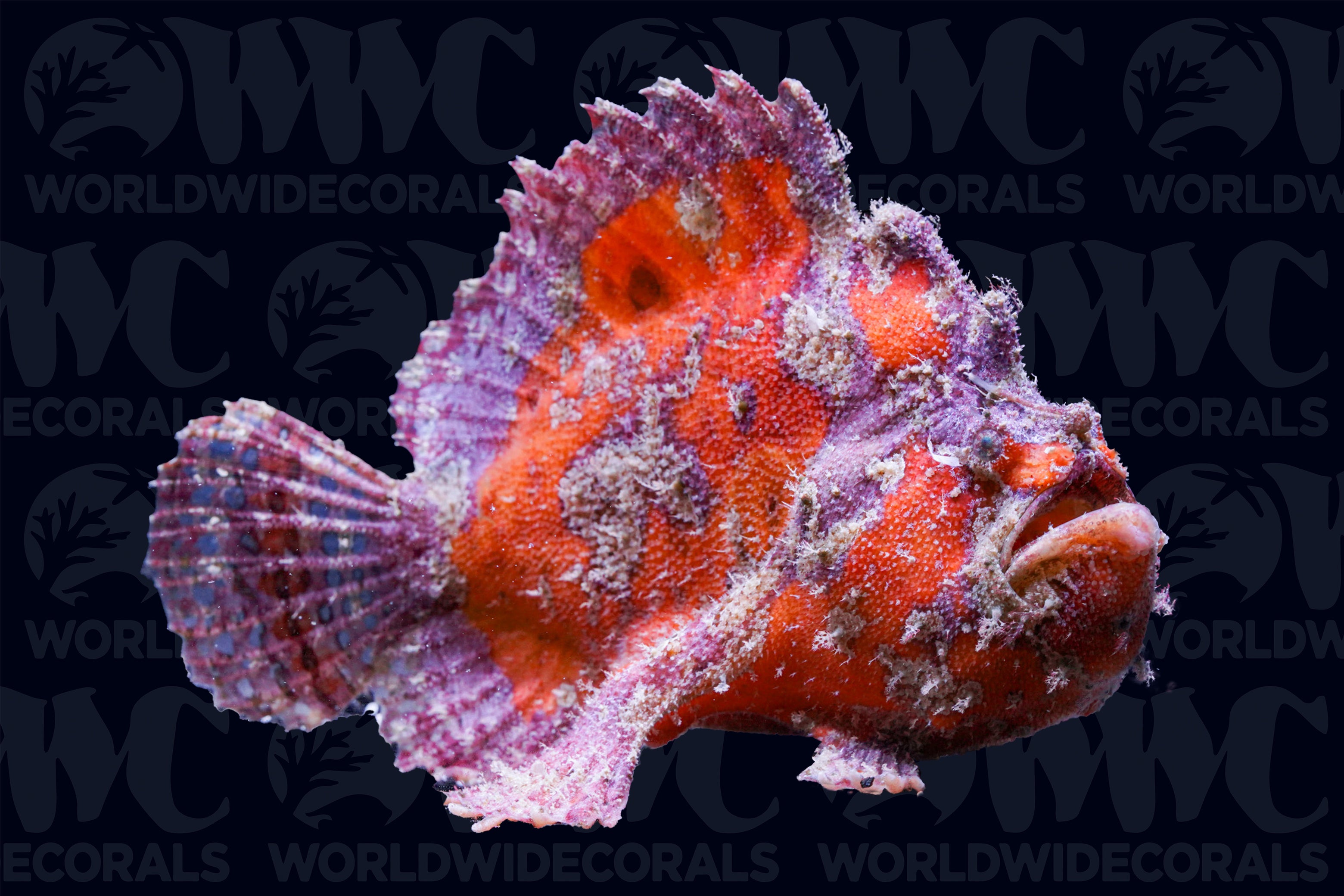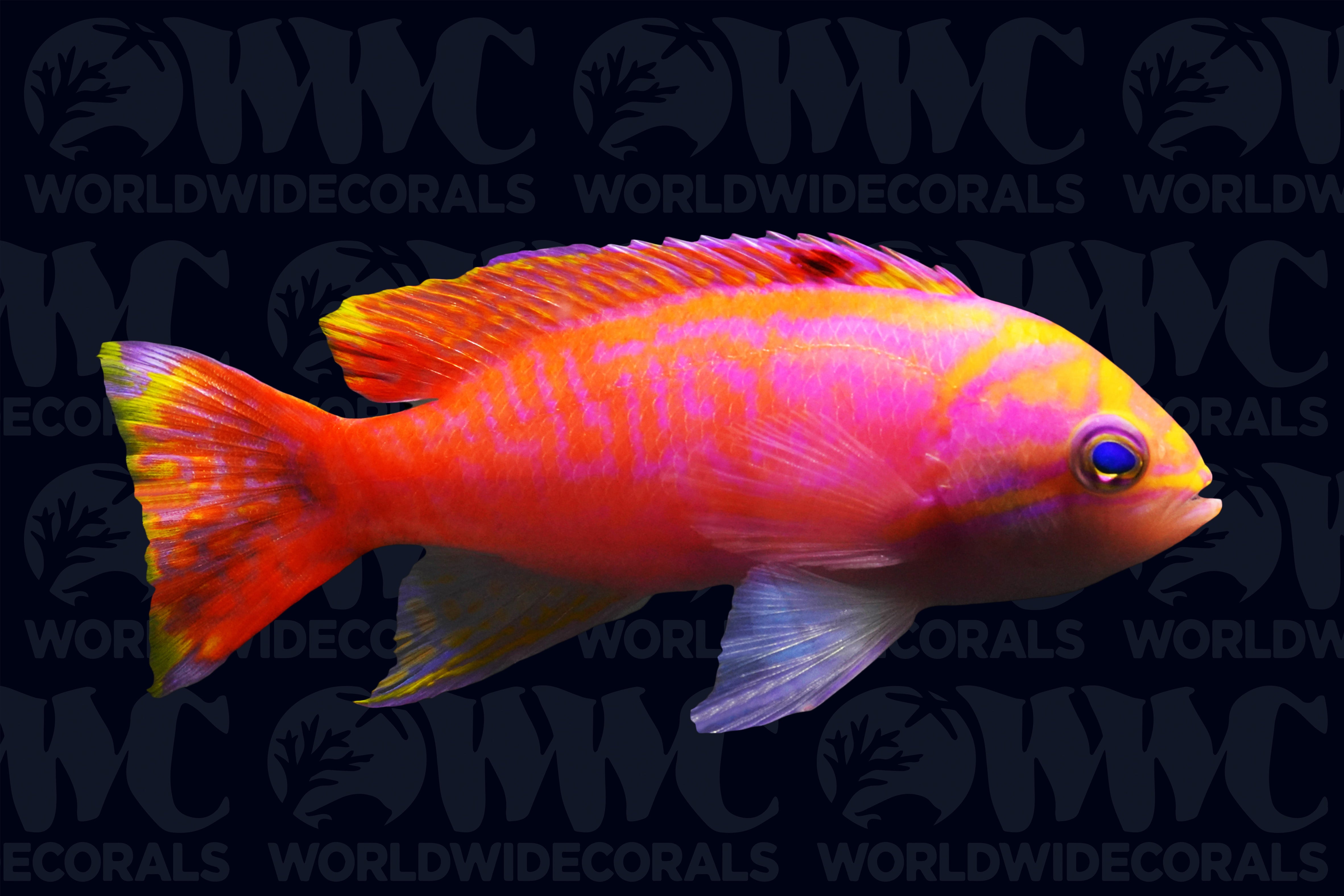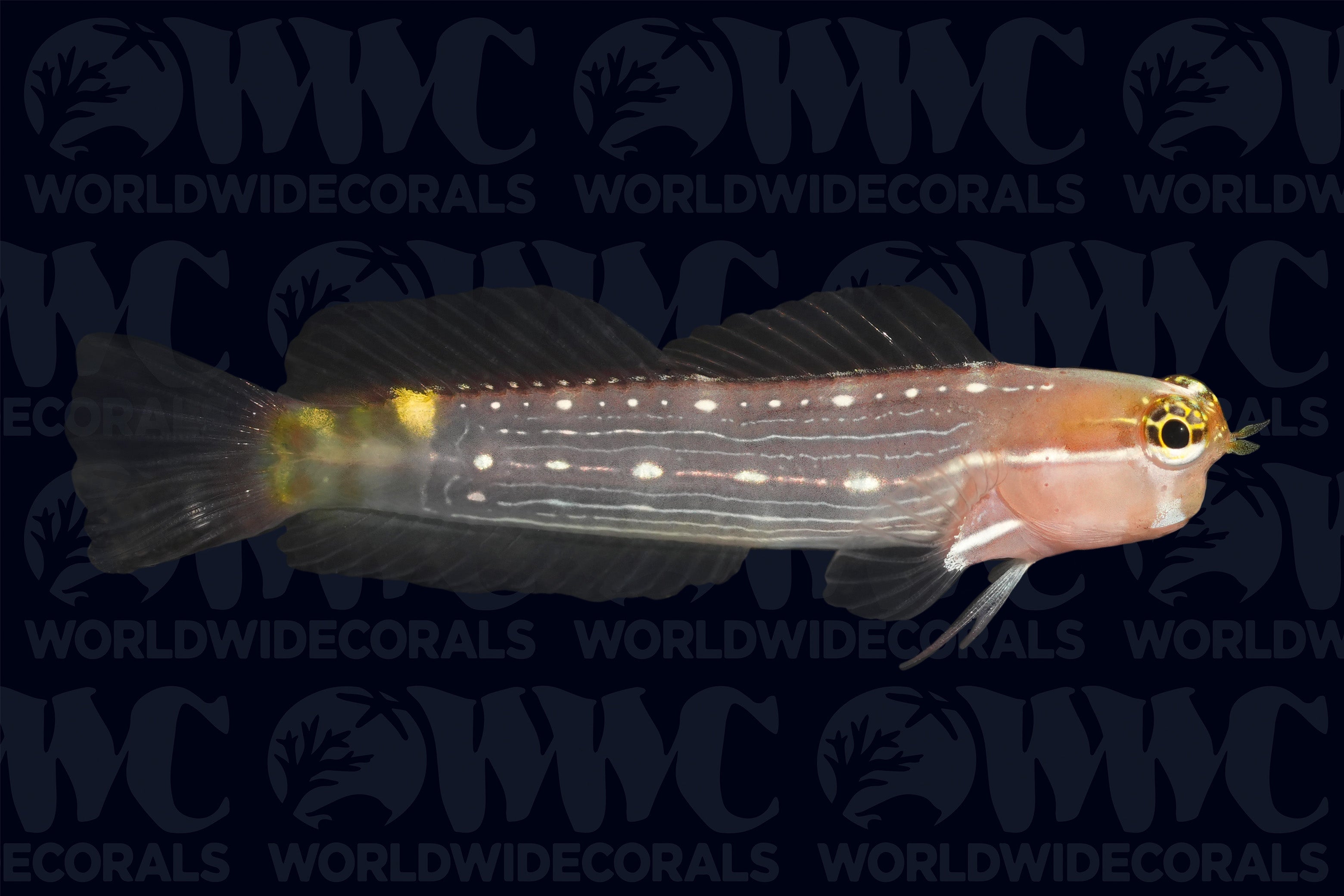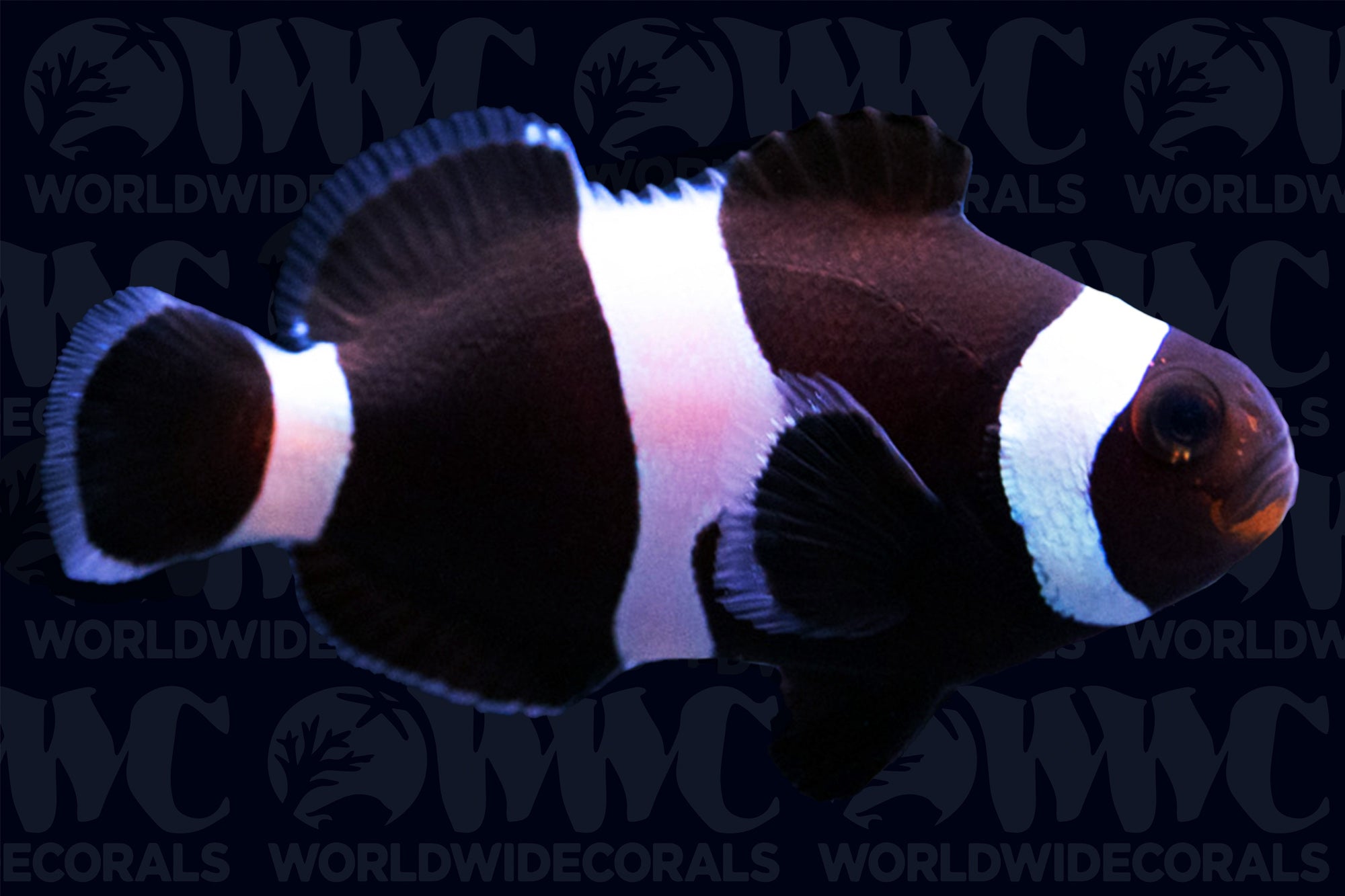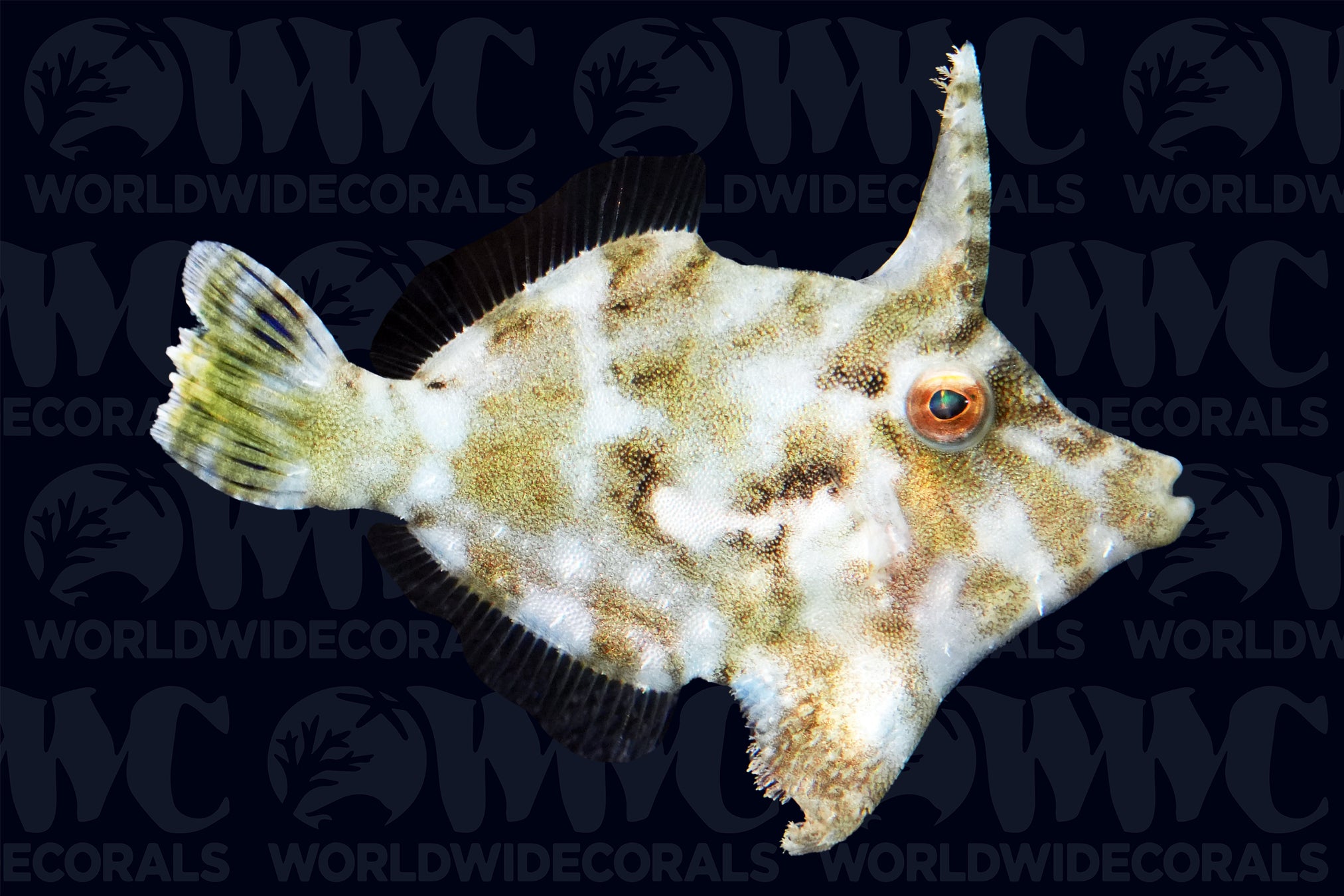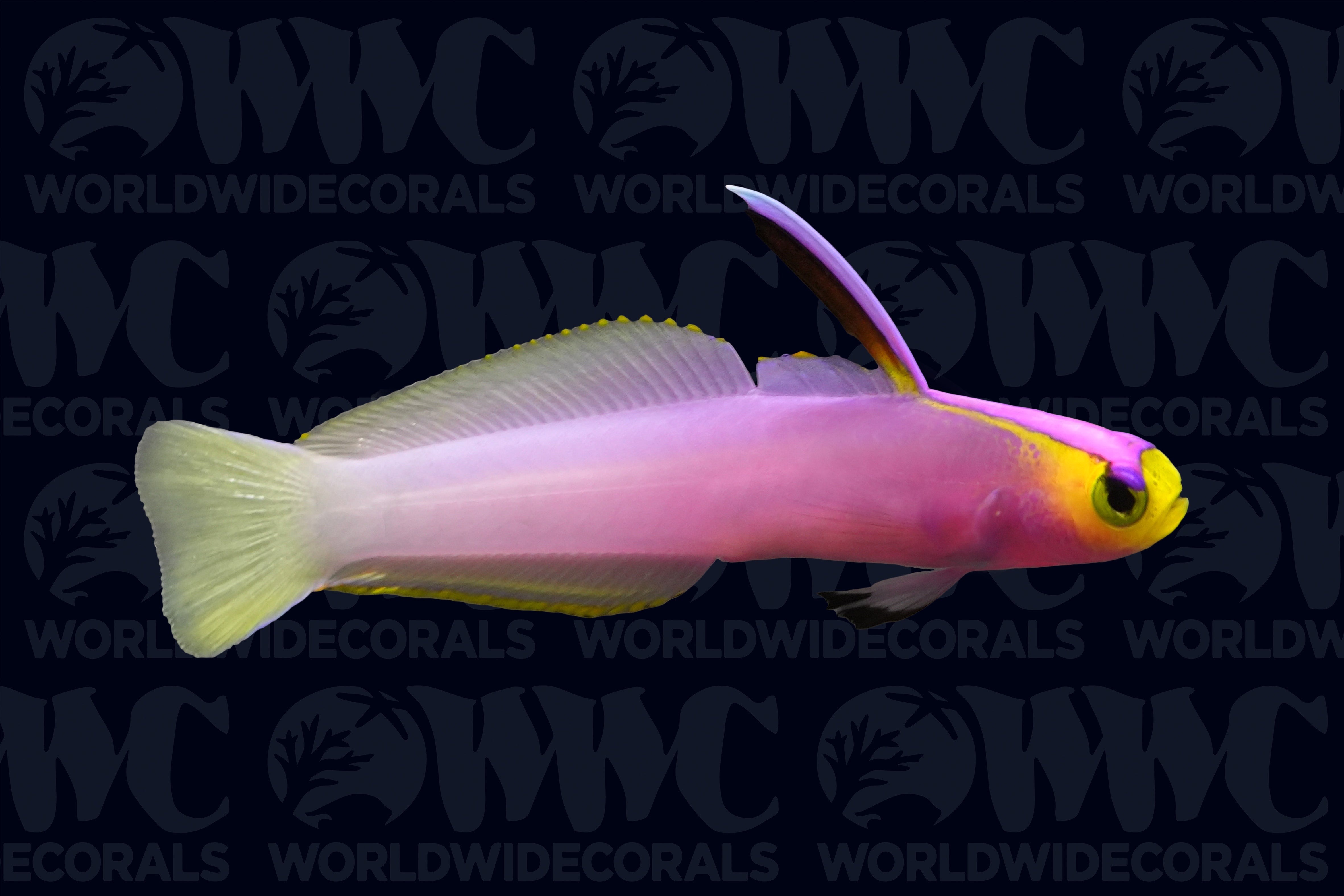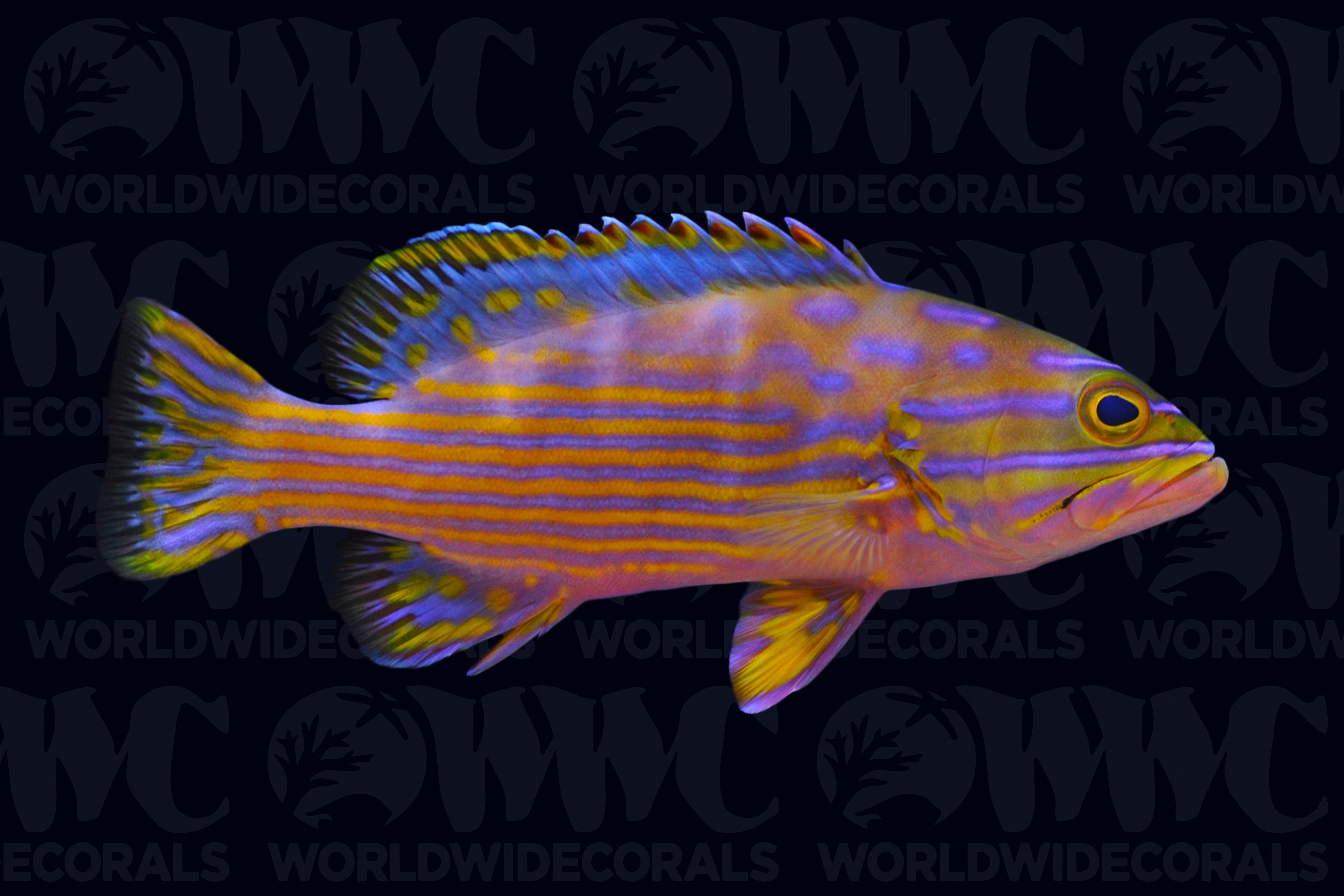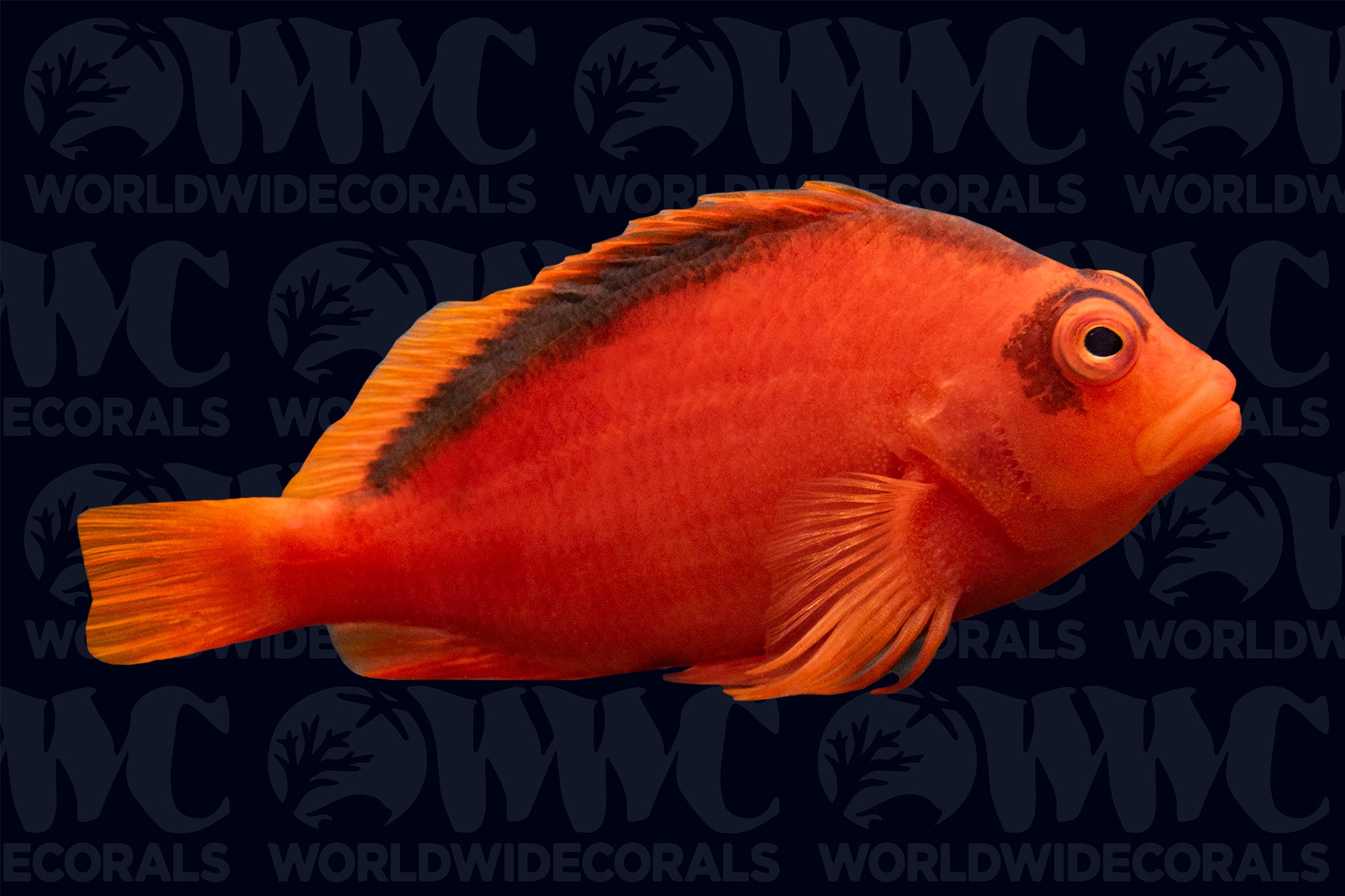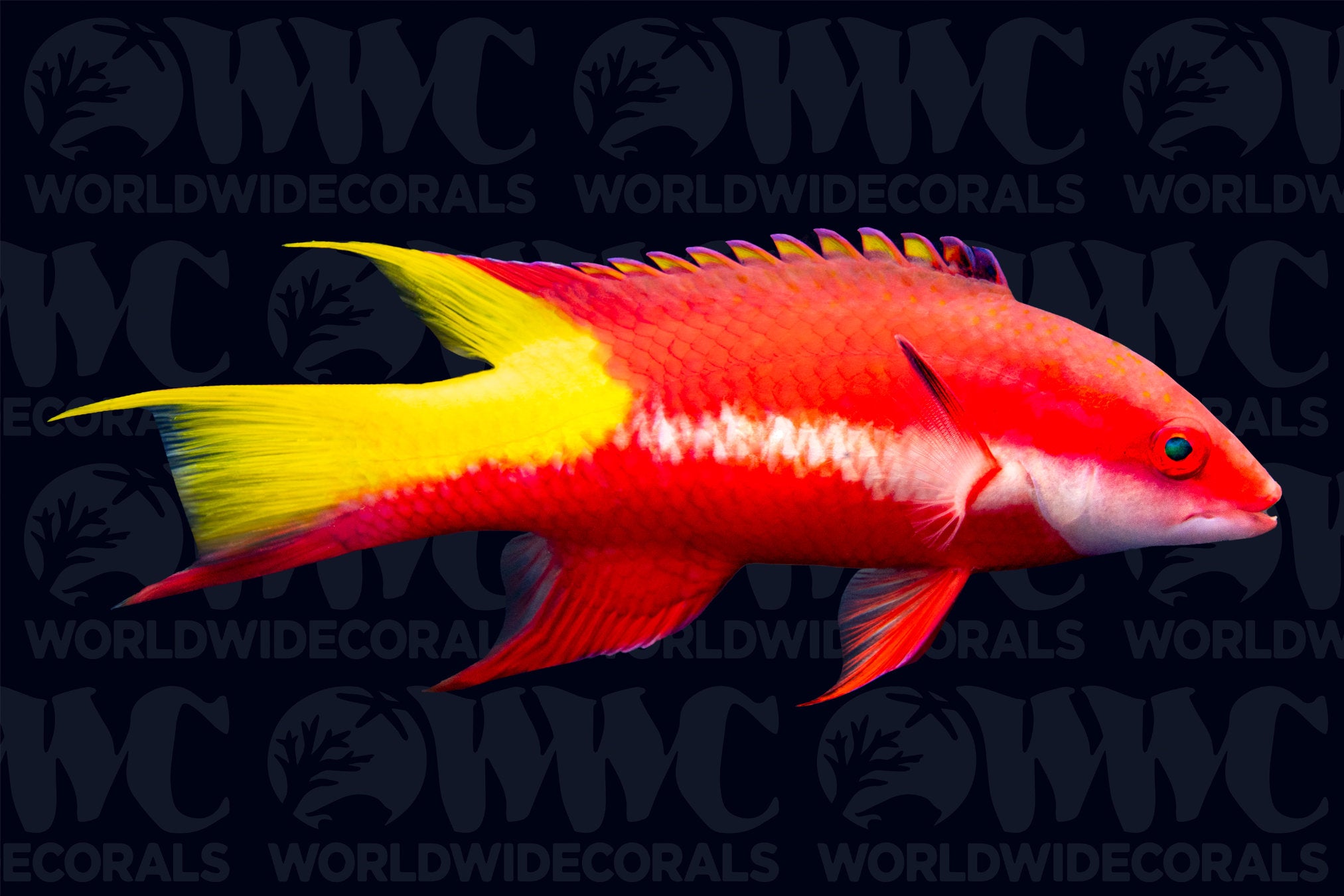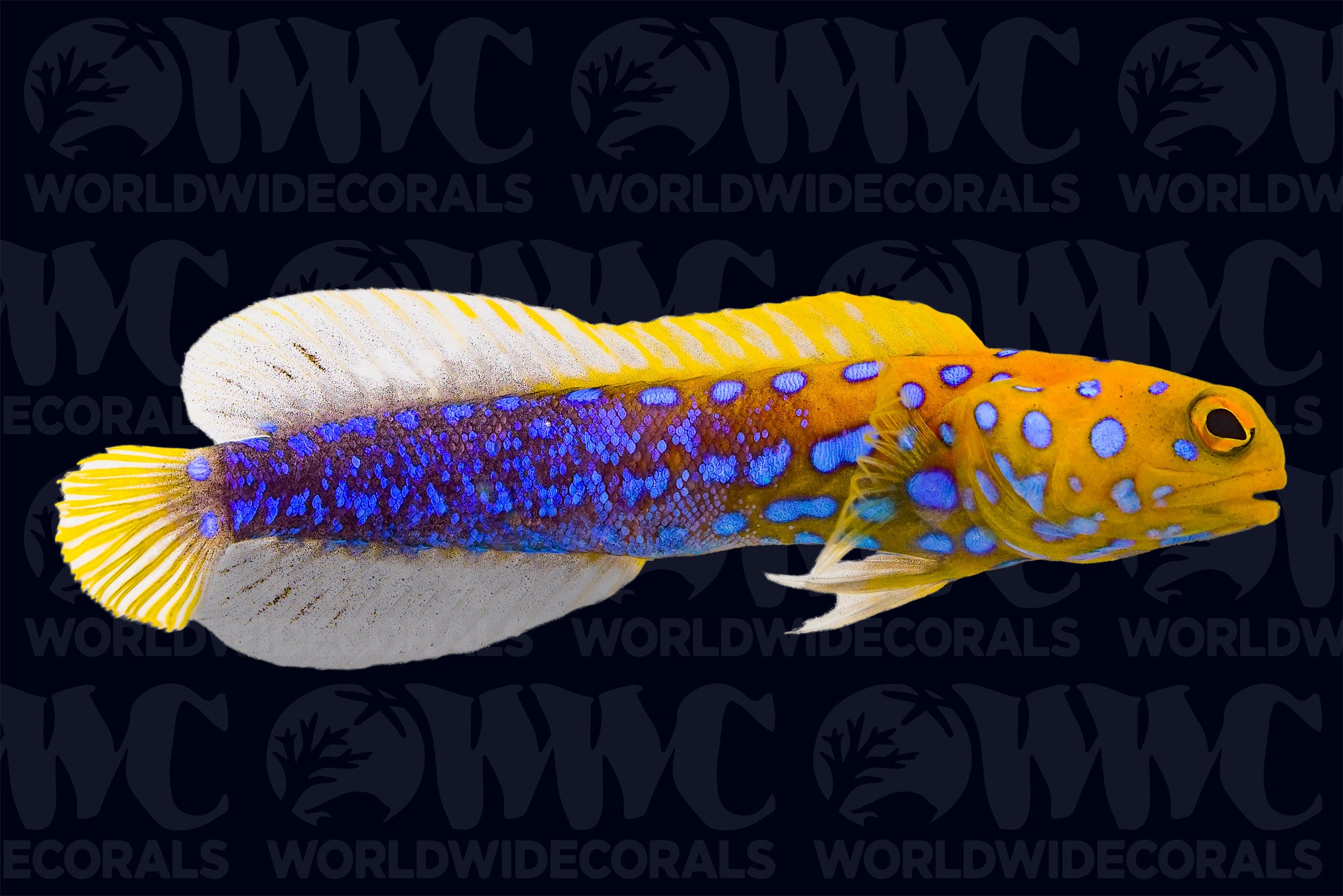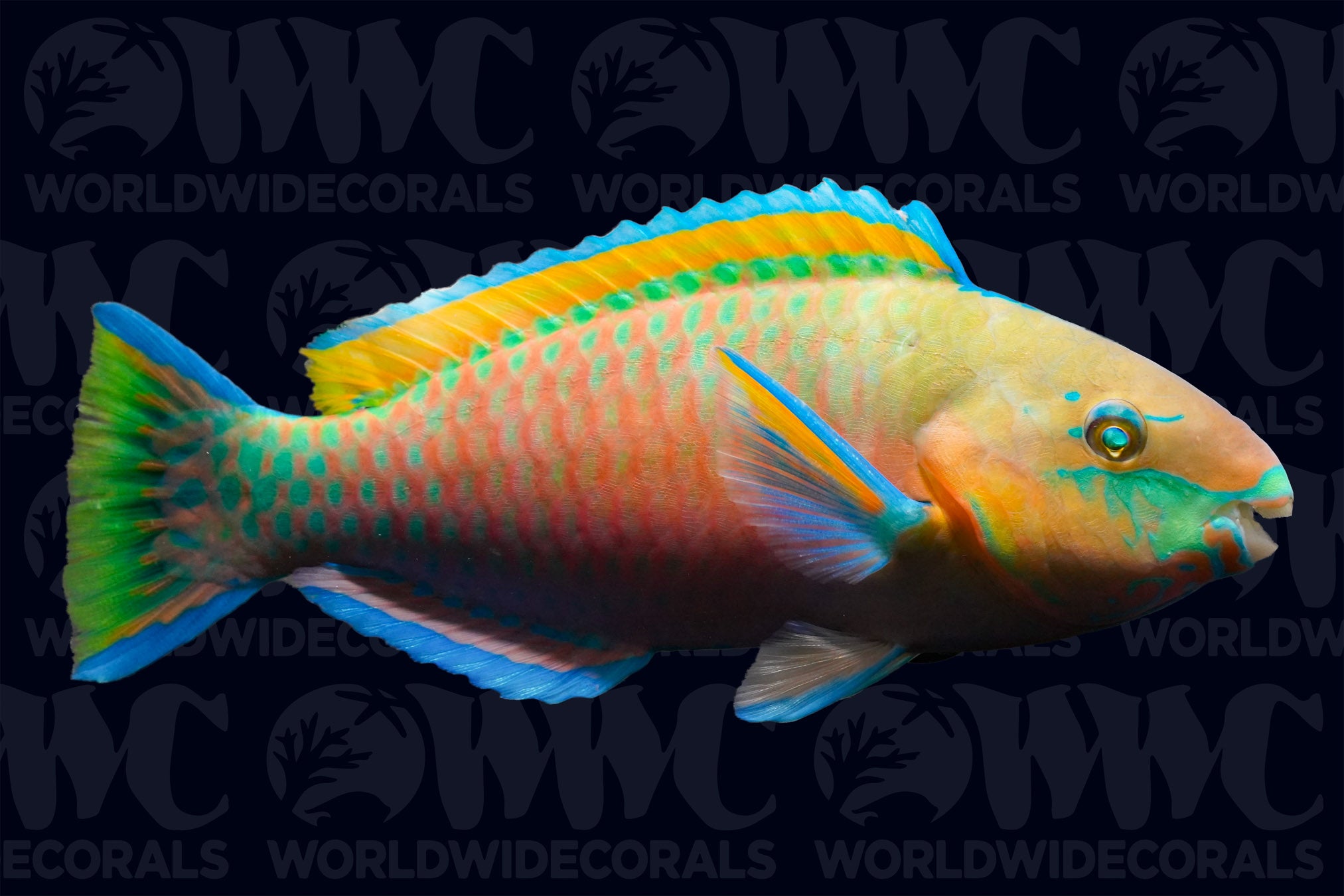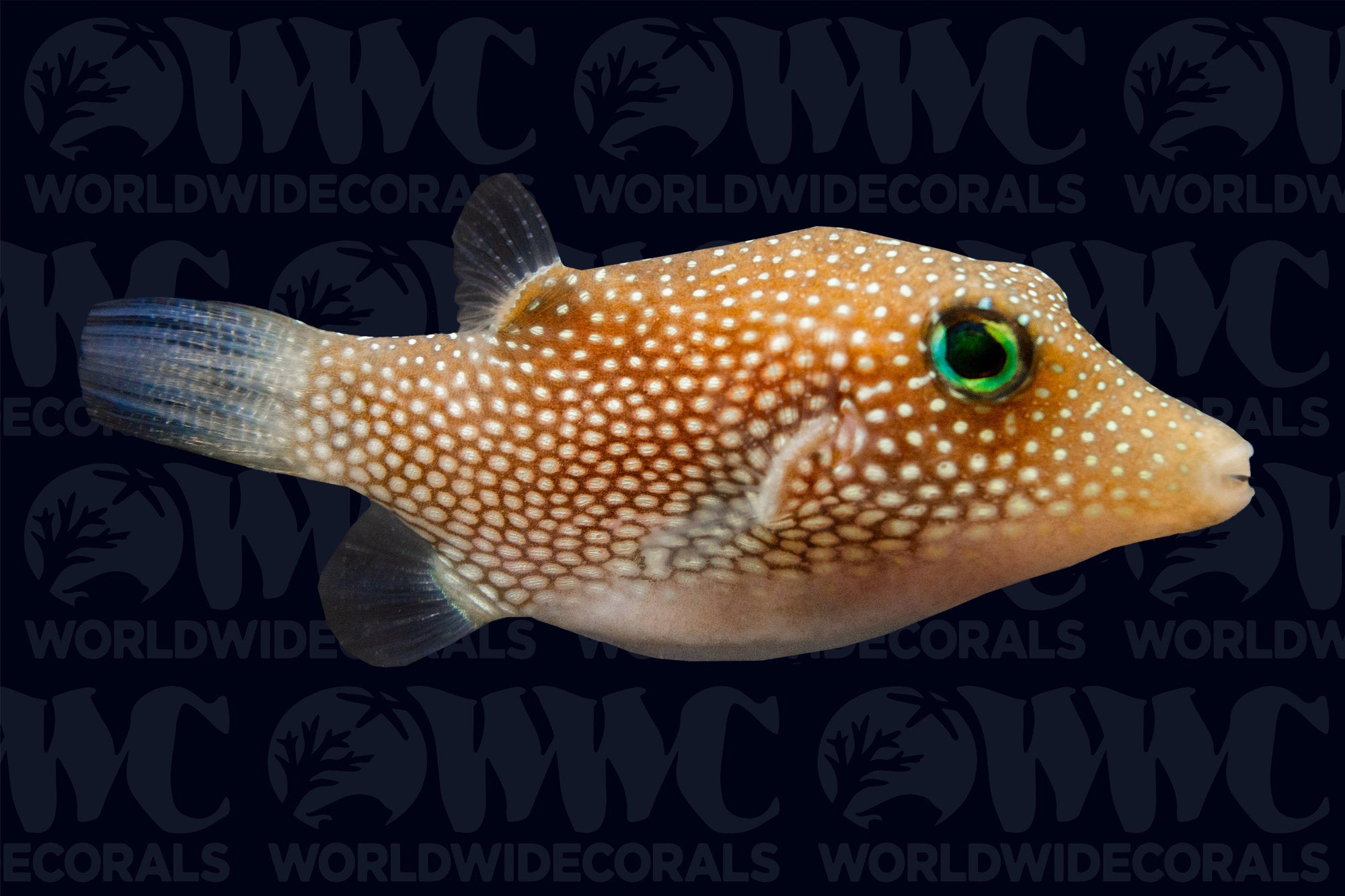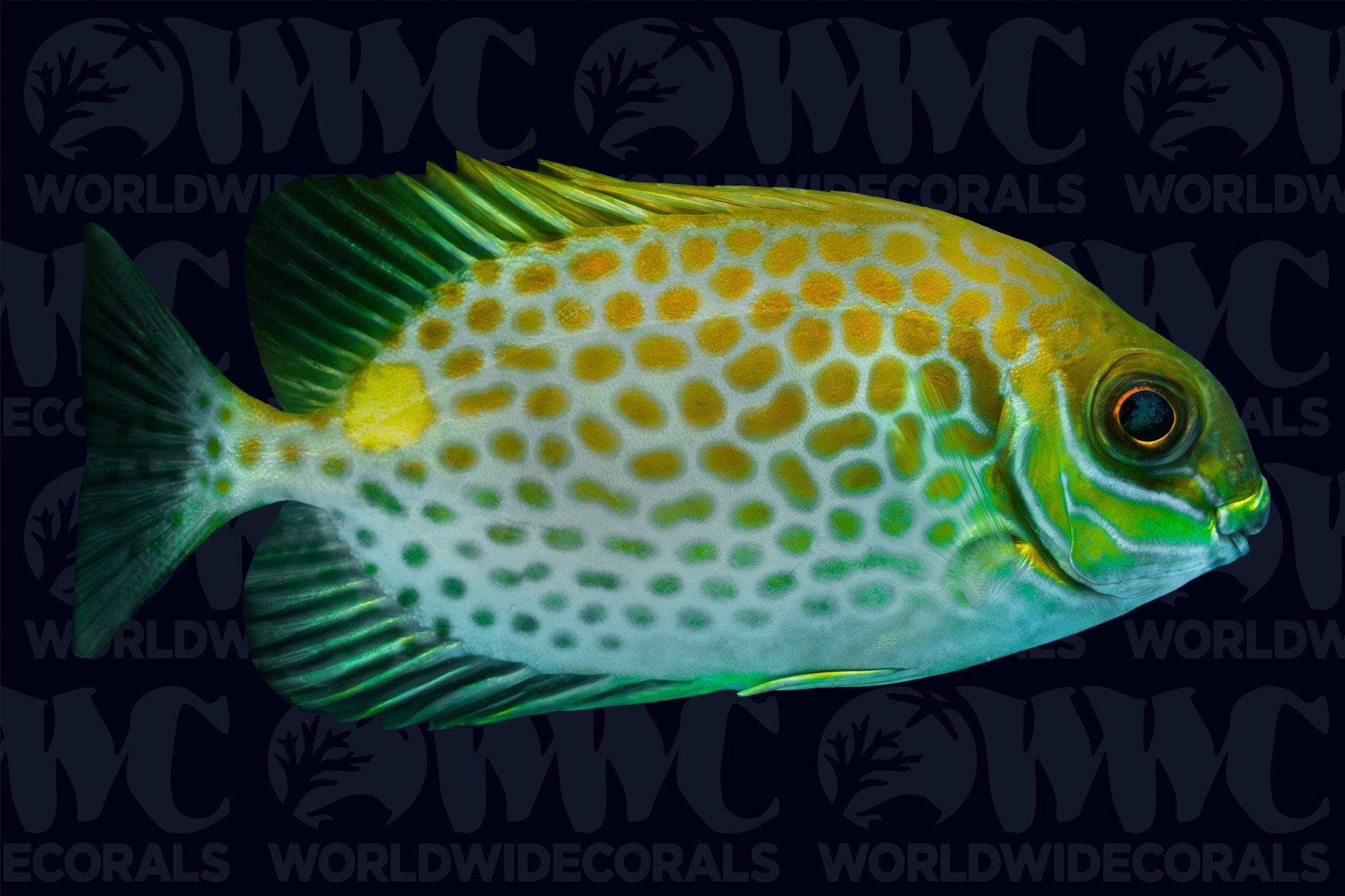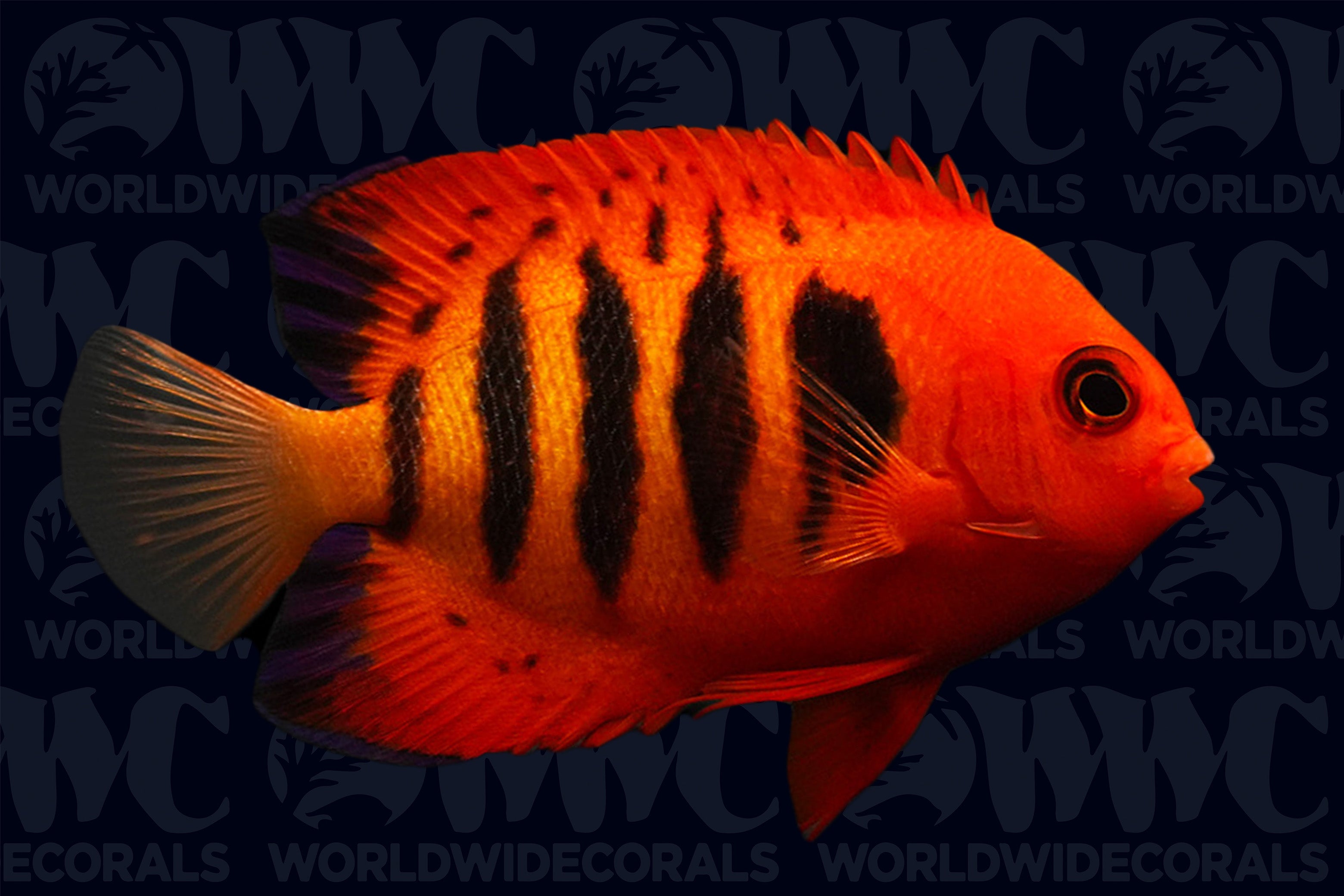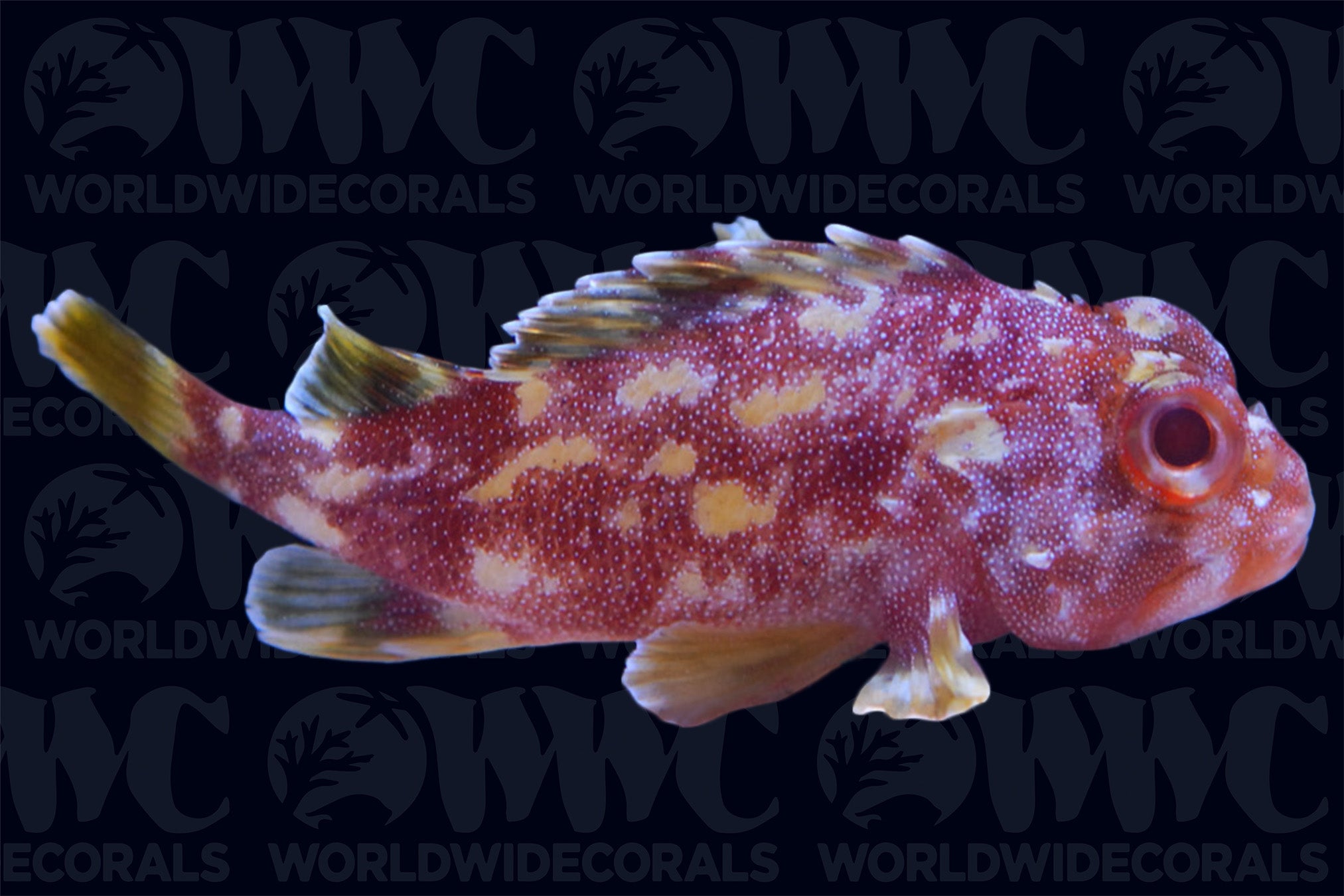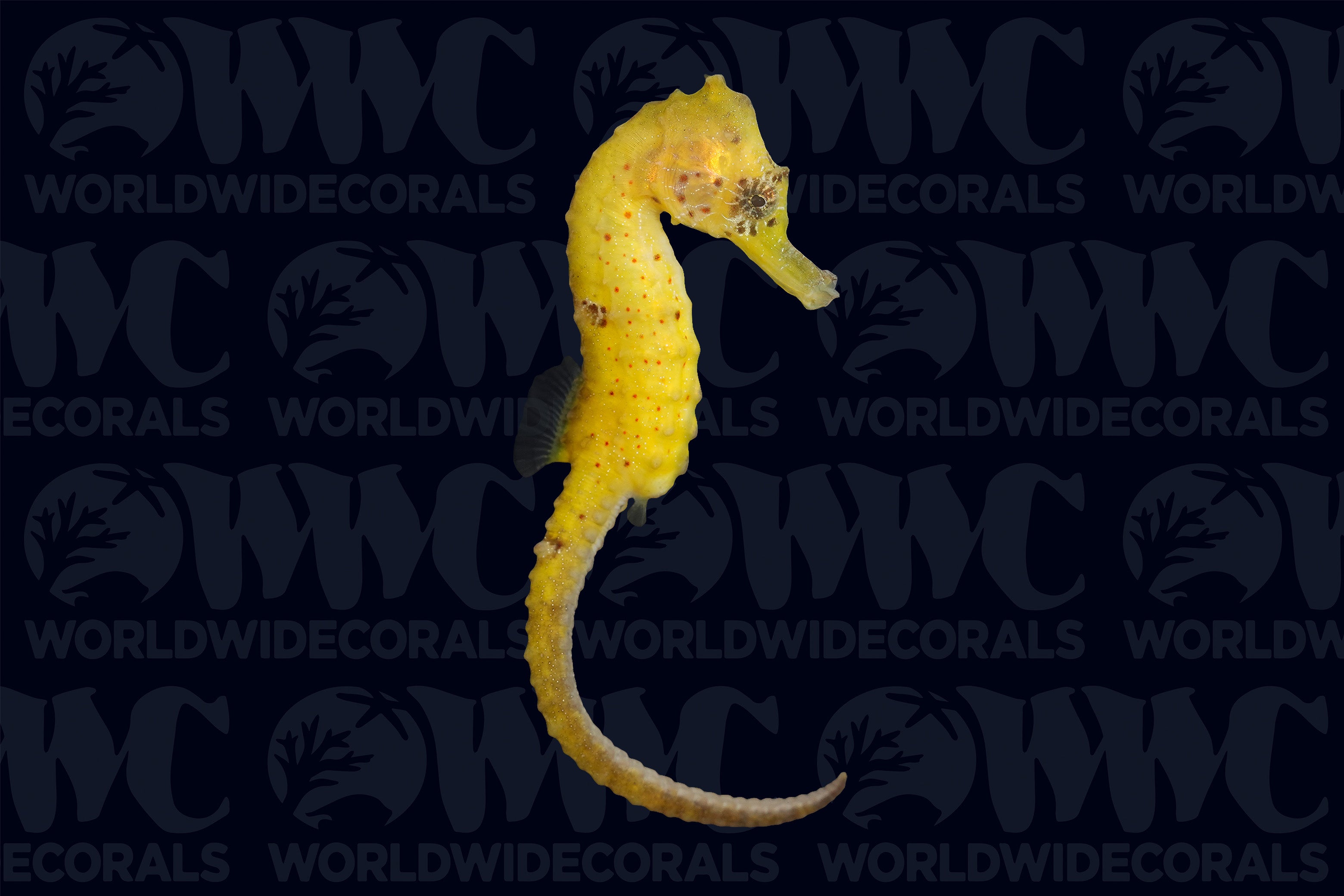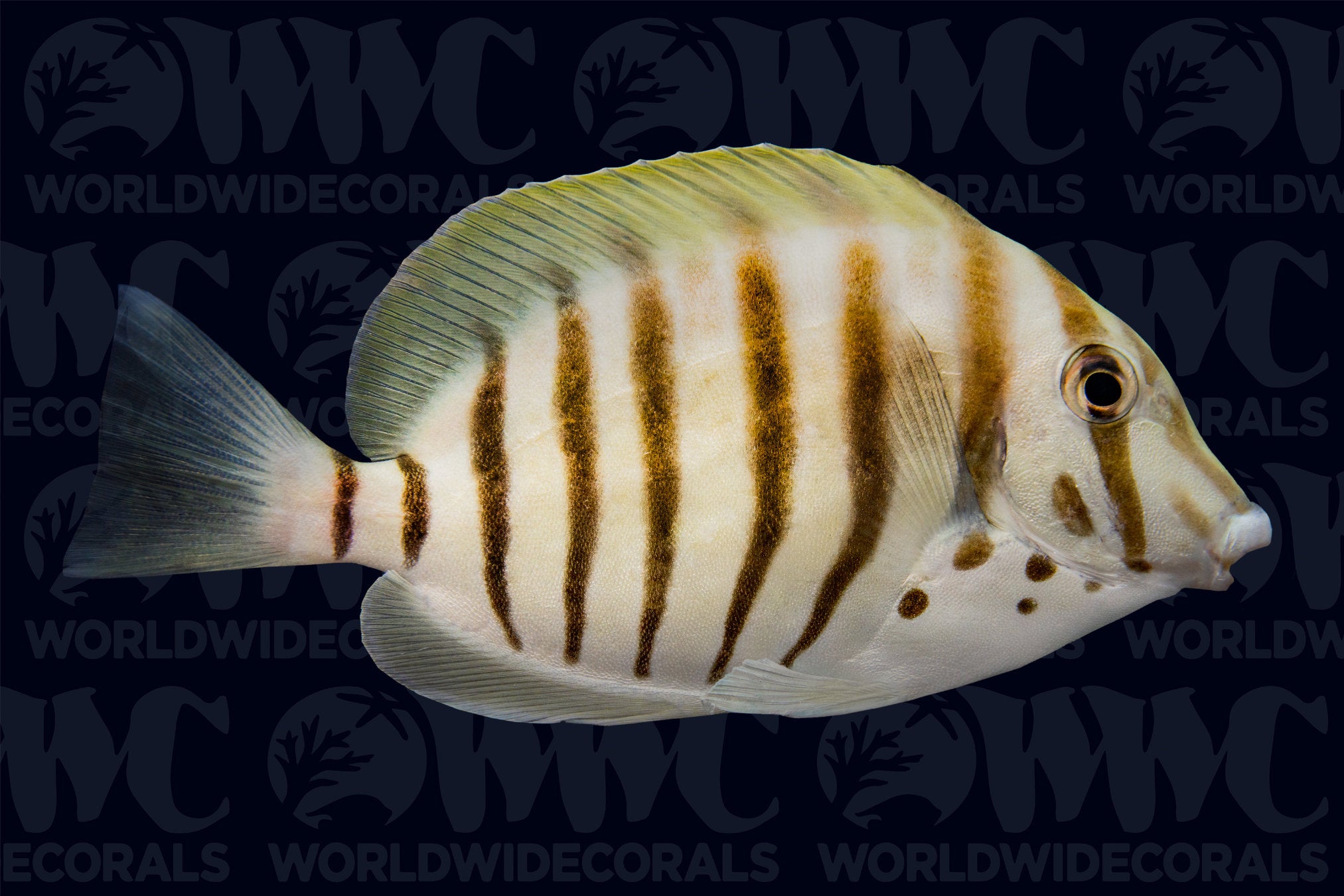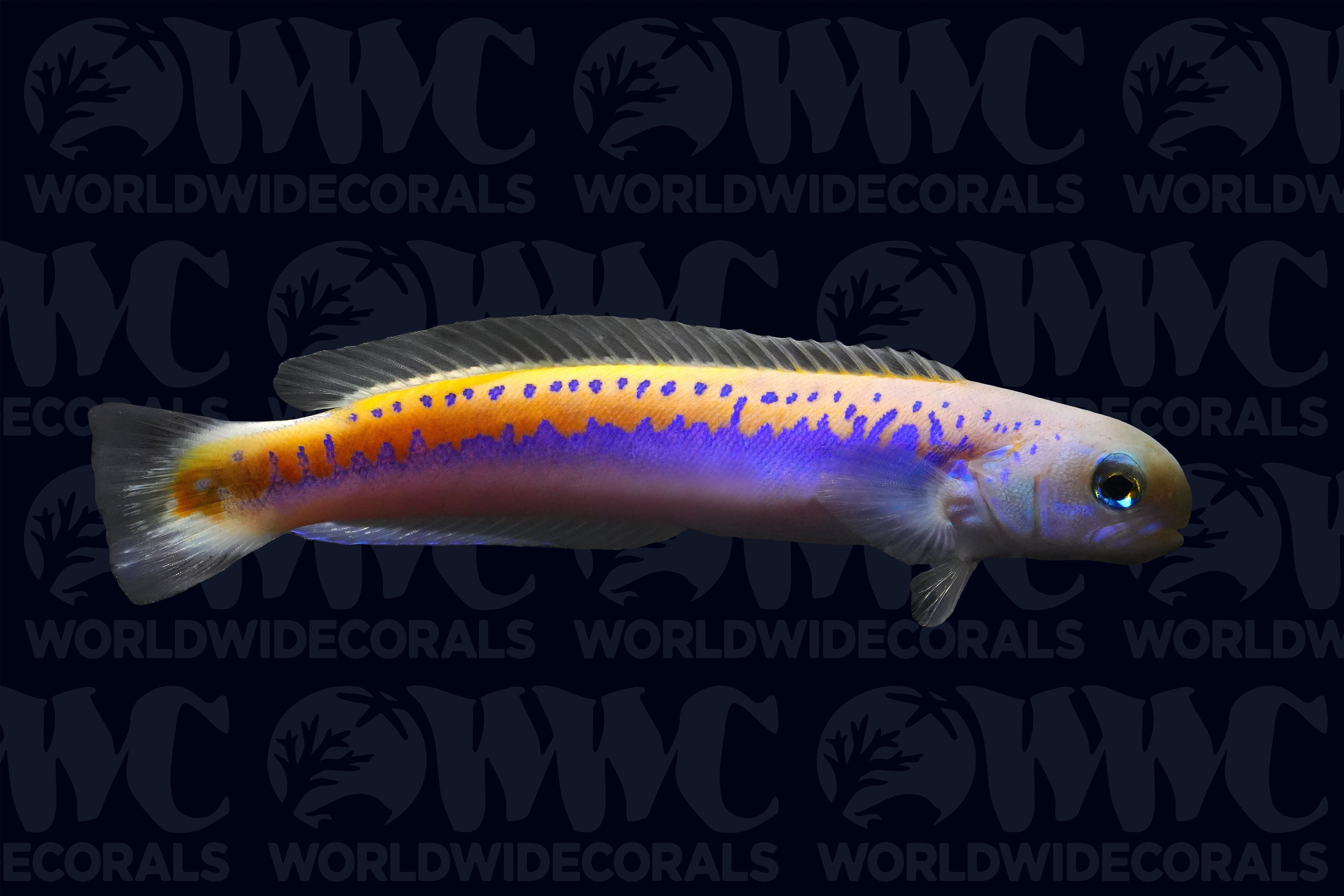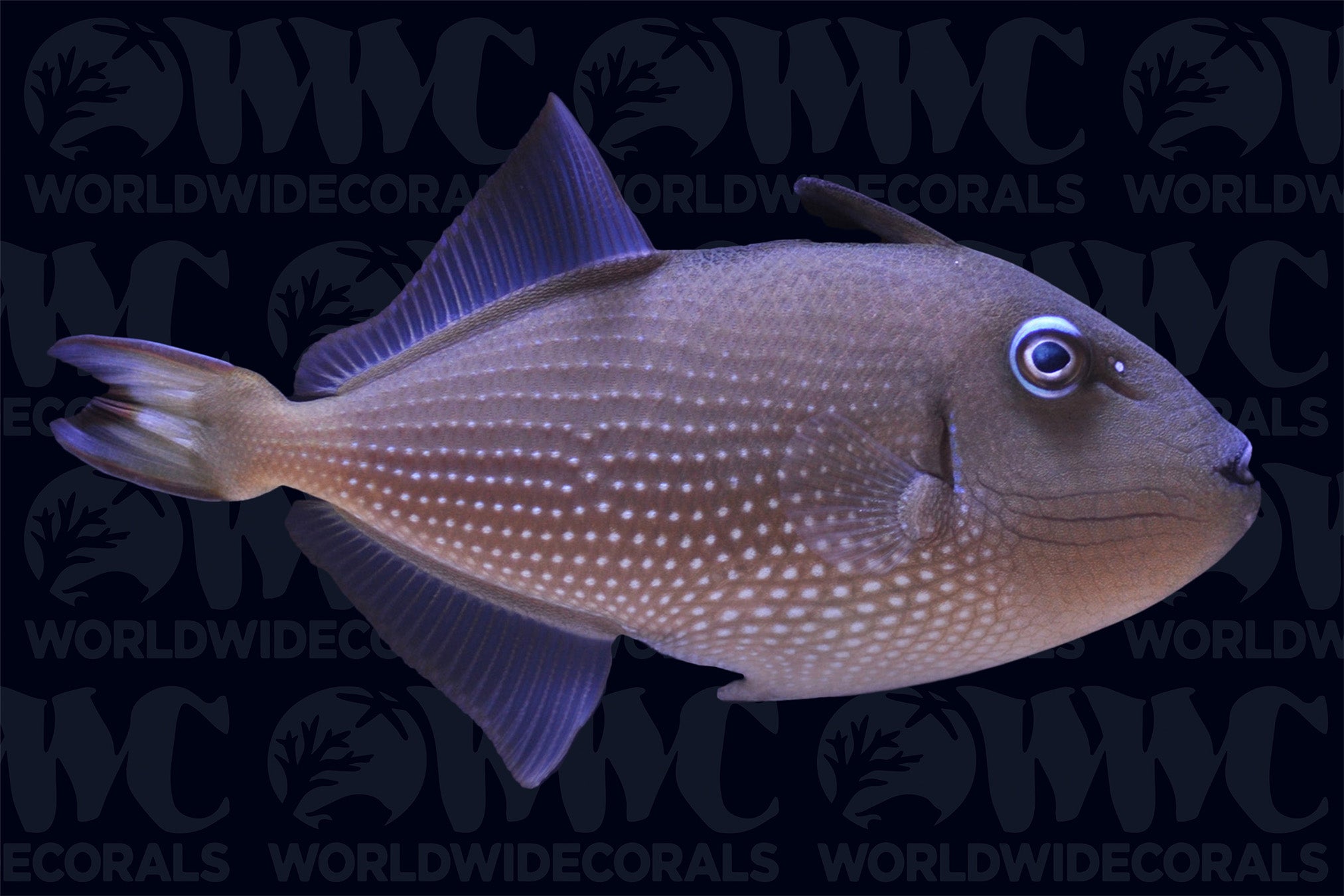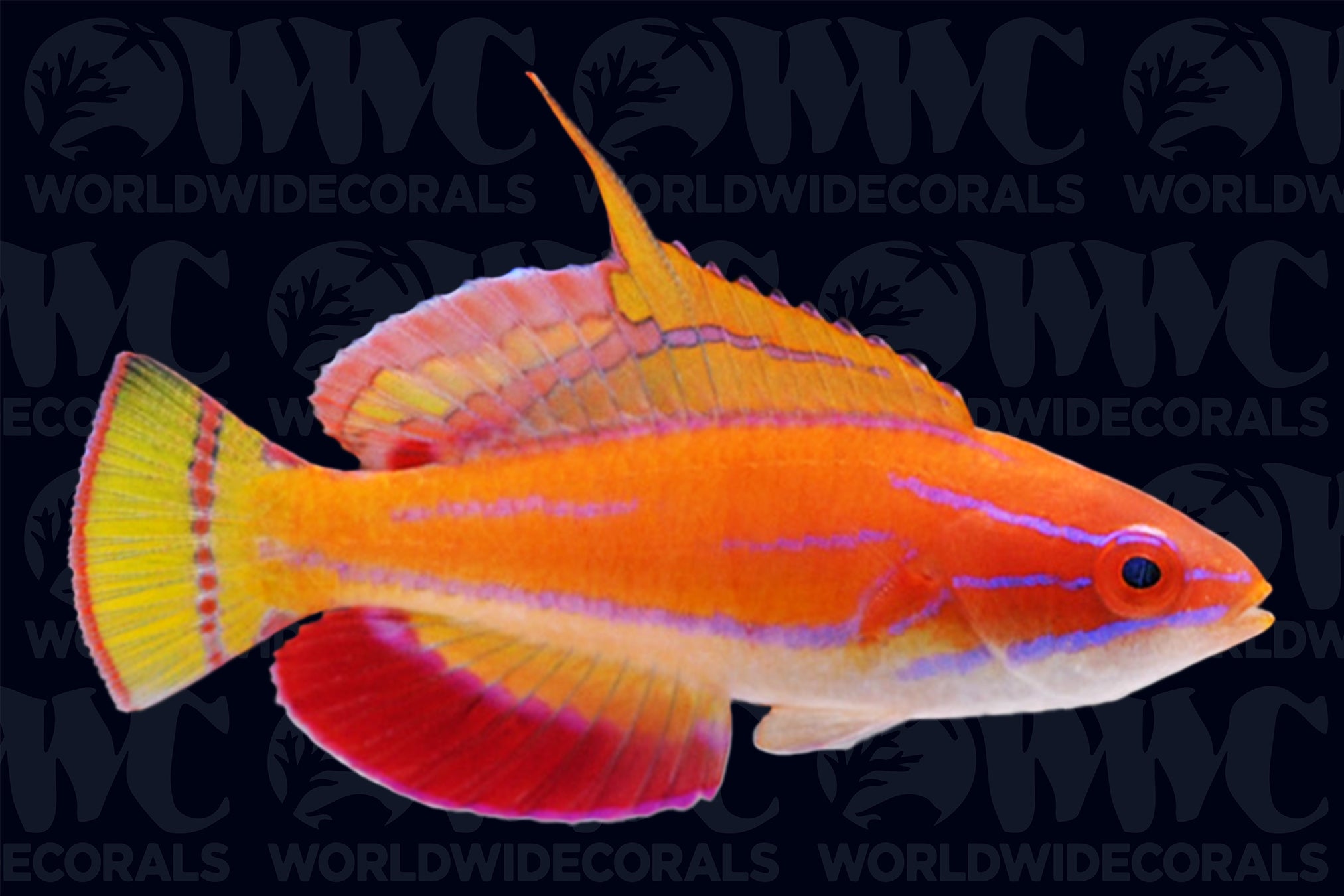Description
Stonogobiops dracula
Gobies are an excellent addition to reef aquariums and smaller aquariums because they have a small adult size and a lot of personality. The Stonogobiops Gobies have some of most beautiful nano Gobies available and will only grow to be about 3”. These small fish are not as shy as some of the other small Gobies and can be seen poking out of burrows or live rock. They are known for creating a symbiotic relationship with species of Pistol Shrimp. They can be seen sharing a burrow, which makes an awesome display in your aquarium! This Goby is fairly hardy and are reef safe as long as they have peaceful tank mates. When possible, they should be the first bottom dweller added so they can claim their territory. They are carnivores and will need a varied diet of frozen meaty foods for their continued health. The Dracula Goby is white in coloration with vertical dark red stripes. Their faces are yellow with a thin red stripe that goes through its eye. They are found in the Western Indian Ocean inhabiting open sand and rubble zones near reefs up to 37 meters deep.
Gobies are an excellent addition to reef aquariums and smaller aquariums because they have a small adult size and a lot of personality. The Stonogobiops Gobies have some of most beautiful nano Gobies available and will only grow to be about 3”. These small fish are not as shy as some of the other small Gobies and can be seen poking out of burrows or live rock. They are known for creating a symbiotic relationship with species of Pistol Shrimp. They can be seen sharing a burrow, which makes an awesome display in your aquarium! This Goby is fairly hardy and are reef safe as long as they have peaceful tank mates. When possible, they should be the first bottom dweller added so they can claim their territory. They are carnivores and will need a varied diet of frozen meaty foods for their continued health. The Dracula Goby is white in coloration with vertical dark red stripes. Their faces are yellow with a thin red stripe that goes through its eye. They are found in the Western Indian Ocean inhabiting open sand and rubble zones near reefs up to 37 meters deep.
3 DAY GUARANTEE | Hassle Free | 100% Satisfaction | Online Orders Only


